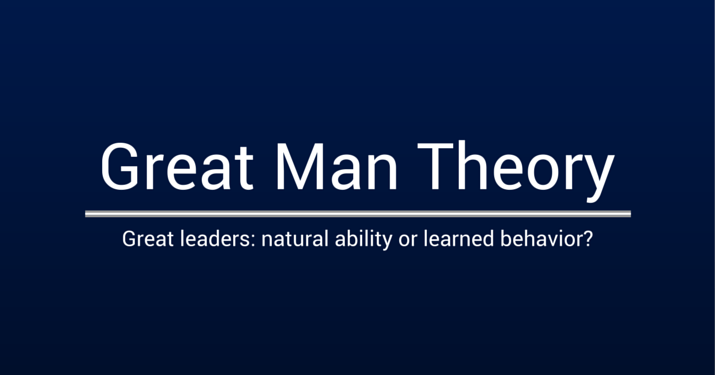The Great Man Theory of Leadership Explained
Last Updated September 10, 2021

What makes a man or woman rise above others to assume the mantle of leadership? Why are some more drawn to the burdens of the job than others? What set history’s great leaders apart from their contemporaries and enabled them to navigate often tumultuous waters, defying the odds to achieve their goals on behalf of themselves and their people Some theorists have argued that these questions are answered by the Great Man Theory of Leadership.
What is the Great Man Theory of Leadership?
The Great Man Theory of Leadership espouses that great leaders are born, not made. These individuals come into the world possessing certain characteristics and traits not found in all people. These abilities enable them to lead while shaping the very pages of history. Under great man theory, prominent leaders throughout the course of history were born to lead and deserved to do so as a result of their natural abilities and talents.
The Great Man Theory of Leadership centers on two main assumptions:
- Great leaders are born possessing certain traits that enable them to rise and lead.
- Great leaders can arise when the need for them is great.
Those who support the great man theory say leaders are born with the attributes necessary to set them apart from those around them and that these traits enable them to assume roles of authority and power. Great leaders are heroes, according to this theory, that accomplish great feats against the odds on behalf of followers. The Great Man Theory of Leadership essentially implies that those in power deserve to lead because of the traits they’ve been endowed with.
History of the Great Man Theory
The Great Man Theory was established in the 19th century by proponents such as historian Thomas Carlyle, who put forth the idea that the world’s history is nothing more than a collection of biographies belonging to great men.
Carlyle and contemporaries gained recognition for the theory in their time, as evidenced by such works as the Encyclopedia Britannica Eleventh Edition, published in 1911. This encyclopedia told the story of world history through biographies of the great men that led during different historical periods. Not everyone in Carlyle’s time, however, agreed with the theory’s assumptions.
Opposing Views to the Great Man Theory
Herbert Spencer, a noted philosopher, sociologist, biologist and political theorist of the Victorian era, countered that the Great Man Theory was childish, primitive and unscientific. He believed leaders were products of their environment. He advocated that before a “great man” can remake his society, that society has to make him.
Despite Spencer’s arguments to the contrary, the Great Man Theory remained the popular and predominant theory for explaining and understanding leadership until the mid-20th century. As the behavioral sciences grew, so did the idea that leadership is more of a science that can be learned and nurtured. Those with opposing views say great leaders are shaped and molded by their times as the traits necessary to lead are learned and honed.
However, much like the question of nature versus nurture, there are those who still support the Great Man Theory of Leadership and the idea that men and women leaders are born, not made.
